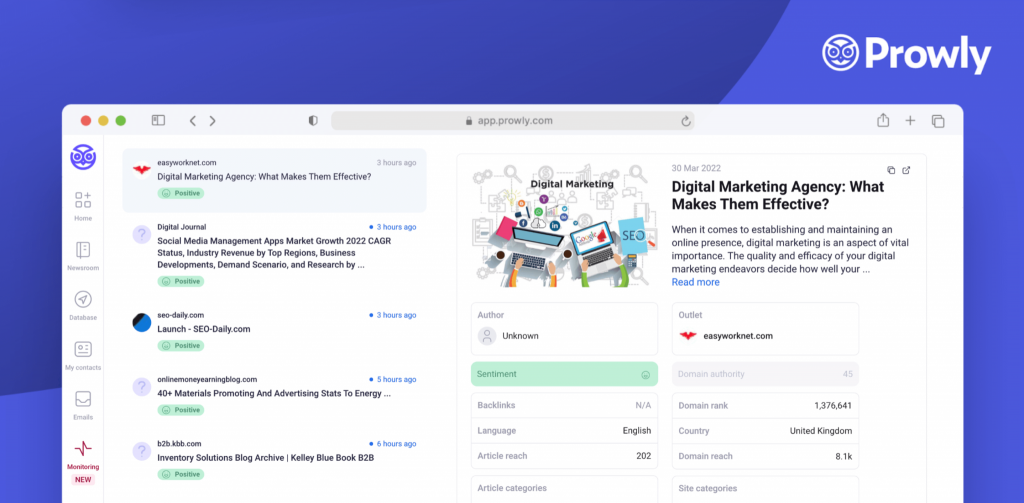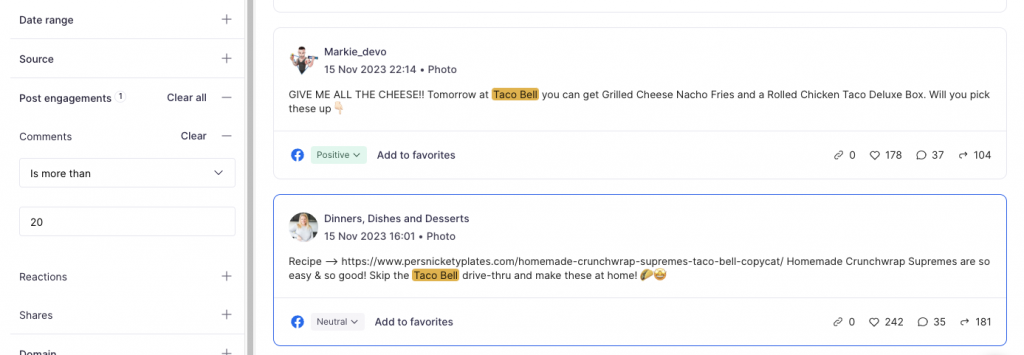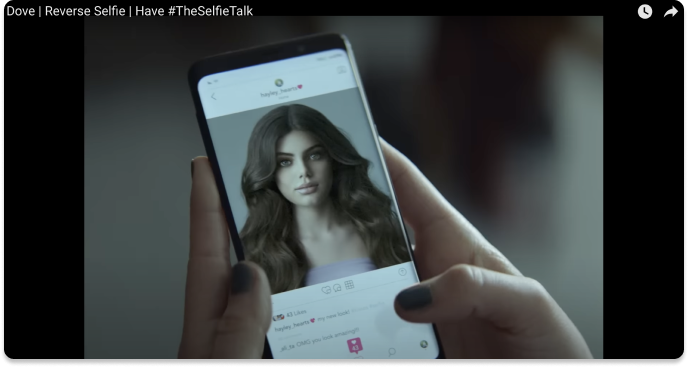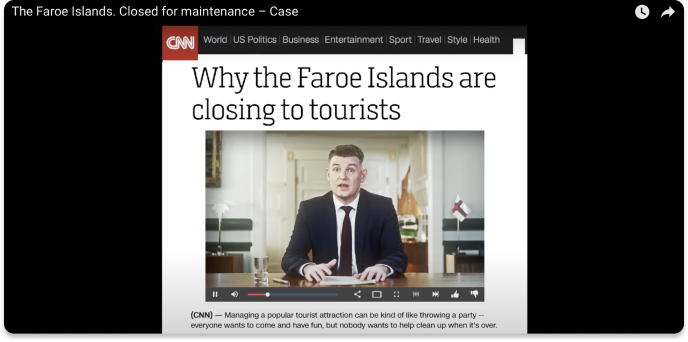The PESO model is a comprehensive approach to organizing and understanding different categories of media and how they intersect in the modern communication landscape.
The acronym "PESO" stands for Paid, Earned, Shared, and Owned media and was coined in 2014 by Gini Dietrich, Founder and CEO at Spin Sucks.
It represents distinct types of media channels with their own sets of strategies, advantages, and challenges. This model is widely used in Public Relations to leverage various media channels, thereby optimizing the reach and impact of a brand's message.
Let's explain what the PESO model is, how it works and how PR professionals can use it to achieve great results.
If you’re looking for a way to keep track of your Paid, Earned, Shared, and Owned mentions - try Prowly’s Media Monitoring for 7 days for free. Track all the metrics you need and create PR reports in just a few clicks.
The PESO model explained
What are the four types of media included in the PESO model?
⬛️ Paid media - refers to any media exposure that is purchased by a brand. This could include traditional advertising, sponsorships, or digital forms like pay-per-click advertising or sponsored content.
⬛️ Earned media - is publicity or coverage a brand receives without directly paying for it. This could come from media coverage, social media mentions, reviews, and other forms of third-party endorsement.
⬛️ Shared media - mainly encompasses social media, where brands and consumers can share content to extend its reach. User-generated content, brand posts, and viral content are all examples of shared media.
⬛️ Owned media - refers to any media channel a brand has full control over. This would include the brand's website, blog, email newsletters, brochures, and other forms of content that the brand creates and distributes itself.
Why does the PESO communications model even exist?
Each of these four channels, when taken alone, all have their upsides and downsides. None of them are perfect and relying on just one usually does not bring meaningful results.
The author of the PESO model, Gini Dietrich, says that the four channels should be seen as the corners of a pyramid. Moreso, she says that having this model in place allows PR professionals to directly tie their work to their business outcomes. This has been an ongoing challenge for the PR world, to say the least.
→ Here is a great PESO model explanation from SpinSucks, you can read this article to gain additional knowledge on this topic.

Meanwhile, we’ll go through the four corners of the PESO PR model.
Owned media
Owned media is all the media where you have direct influence over the content that is created.
Owned media channels include:
| → Company websites: The brand's official website often serves as the primary point of contact for potential customers seeking information about its products or services. → Company blogs: Blogs are used to share useful and relevant content, showcasing the brand's knowledge and expertise in its field. → Email newsletters: These allow the brand to send personalized content directly to the inbox of potential and existing customers. → Social media accounts: Platforms like Facebook, Instagram, Twitter, and LinkedIn allow brands to interact with their audience, share updates, and foster a sense of community. → Videos and webinars: These are used to provide more in-depth information about the brand and their offers. → Podcasts: Podcasts can help a brand establish itself as an authority in its field by discussing relevant topics and sharing expert insights. → Mobile apps: An app can provide a more personalized and convenient experience for customers, encouraging repeat interactions and enhancing customer loyalty. → Ebooks and whitepapers: These can be used to provide comprehensive information about a specific topic, demonstrating the brand's expertise and providing value to their audience. → Infographics: Visually appealing and easily digestible, infographics are a useful tool for conveying complex information in an accessible format. |
All these and any other type of content format where you are in direct control over the content you create and the way you portray your business.
To create and maintain a strong owned media presence, think about the channels where your customers spend most of their time. Depending on what you sell and who your target audience is, this could be vastly different.
💡Example: If they're higher-level executives in the B2B world, they might spend more time on a company blog or reading through whitepapers. On the other hand, if you're selling a B2C product to a younger audience, creating and maintaining a TikTok profile with great content may be a better idea.
Shared media
Shared media is the part of the PESO model where you share space with other people on a particular platform.
Shared media channels include:
| → Social media platforms: These can include platforms like Facebook, Instagram, Twitter, LinkedIn, and YouTube where brands can share posts and encourage followers to share, comment, and engage with their content. → Blogs and forums: Community blogs and online forums such as Reddit allow for an open discussion and the sharing of ideas. Brands can participate in these discussions and post relevant content. → Review and ratings websites: Websites like Yelp and Google Reviews allow customers to share their experiences with a brand's products or services, contributing to the brand's shared media presence. → User-generated content platforms: Platforms like TikTok and Snapchat encourage users to create and share their own content, which can include content related to a brand's products or services. → Community groups: Online groups or communities on platforms like Facebook Groups or LinkedIn Groups allow brands to foster a community around their products or services and encourage discussions and content sharing among members. |
You can create some of the content, but for the most part, it’s about others creating content about and around you. As you share the platform with others, standing out with your own profile can be a challenge.
This is why it's important to rely on user-generated content and community engagement.
User-generated content
The impact of user-generated content on shared media platforms is significant. It fosters trust, as prospects often find recommendations from peers more credible than brand advertisements. User-generated content, such as reviews, testimonials, or shared posts, can effectively amplify a brand’s message.
💡 Example: To encourage user-generated content, create campaigns that are centered on your target base and ask them to create content for you. For example, to win in a giveaway or contribute to a cause.
Community engagement
Community engagement is also a vital aspect of shared media. Brands can interact with their audience in real time, addressing questions, resolving issues, and even participating in casual conversations. This level of interaction contributes to a stronger sense of community, fostering brand loyalty and advocacy.
💡 Example: First create a community on Facebook, LinkedIn, Telegram or some other platform. Not only should you start new discussions, but you should also communicate with your followers and group members for the maximum effectiveness of this channel.
Paid media
Paid media is any type of promotional content where a business pays in order to get in front of a specific target audience. Unlike owned or shared media, paid media involves investing money to leverage third-party channels, typically with the goal of increasing brand visibility, reaching new audiences, and driving more traffic to owned media properties.
Paid media channels include:
| → Advertising: This can cover a wide range of formats, including print, broadcast, outdoor, and online advertising. Online advertising itself can take many forms; such as display ads, video ads, search engine marketing, or native advertising. → Sponsored content: This involves paying for content to be featured on a particular platform. For instance, a brand might pay a popular blog in its industry to write a sponsored post about one of its products or services. → Influencer partnerships: Brands often pay influencers to promote their products or services on social media platforms, leveraging the influencer's large following and strong rapport with their audience. → Paid social media promotions: Social media platforms offer various ways to promote content, such as sponsored posts, targeted ads, and 'boosted' posts that reach a larger or more specific audience than organic posts. → Pay-Per-Click (PPC) campaigns: PPC is an online advertising model where advertisers pay a fee each time their ad is clicked. Search engine advertising is one of the most popular forms of PPC. |
Paid media can significantly improve your PR efforts because of its laser precise targeting. Instead of searching for journalists, reporters and content creators, you can set aside a certain budget and target a highly specific group of users on social media, websites and in organic search results.
💡 Example: Let’s imagine a tech startup developing a revolutionary app which may collaborate with a popular tech blog to produce a sponsored article. This article, written by a respected tech journalist, delves into the app's unique features, its development process, and its potential impact on the industry. Thus spreading the word and fostering trust.
Earned media
Earned media refers to any publicity gained through promotional efforts other than advertising, as opposed to owned or paid media. This can include mentions on social media, press coverage, positive reviews, shares of your content by influencers or other brands, and any other unsolicited or free form of promotion. Because it is voluntarily given by others, earned media often carries a kind of authenticity and trustworthiness that paid and owned media do not.
→ Here is a handy guide on “Tips for Creating a Successful Earned Media Strategy” where you can explore various concepts of earned media and learn how to develop a successful earned media strategy, step by step.
Earned media channels include:
| → Media coverage: If a news outlet picks up your brand's story and runs a feature, this is a form of earned media. For example, a tech company launching a groundbreaking product might receive coverage from tech blogs or industry publications. → Social mentions: When people talk about your brand on social media, whether in posts or comments, this is earned media. An individual sharing a positive experience with your brand on Twitter, for instance, contributes to your brand's earned media. → Reviews and ratings: When customers or industry experts write reviews or rate your brand on third-party sites, this is also a form of earned media. A top-rated review of your brand's product on a site like Amazon can do wonders for your brand's reputation and visibility. → Press releases: They exemplify earned media in PR. When a journalist covers your news, it grants your brand exposure and credibility. For example, when launching a new product, a well-crafted press release can lead to media coverage, reaching potential clients and boosting brand visibility. → Events: Hosting or participating in events can generate earned media. This includes industry conferences, product launches, webinars, or charity events. Attendees might share their experiences on social media or blog about the event, and journalists may cover it, increasing brand visibility. For example, a fashion brand hosting a charity fashion show could receive coverage in local news outlets, industry magazines, and social media posts from attendees and influencers. → Word of mouth: This includes the conversations people have about your brand in their everyday lives. This can be a powerful form of earned media, as people tend to trust the recommendations of their friends and family above all. |
💡Example: A brand's CEO may be invited to a podcast or webinar related to their industry as a guest speaker. Their insights and the experience shared during the discussion can not only provide value to listeners but also promote the brand and its values in an organic way by generating further conversation.
Tips for leveraging PR with the PESO model
If you want to successfully use the PESO media model to amplify your PR efforts, you can do so through all four types of media. Here are some practical tips on how you can start with PESO today.
Earned media
For earned media, you want to be seen by relevant people. To utilize the PESO model in public relations, focus on building relationships with journalists instead of one-off encounters.
You can use a Media Database such as Prowly to find journalists who cover topics in your industry and can occasionally reach out - even if you don't have a story.

When you're not reaching out, try to create the kind of content that gains attention. For example, industry reports, infographics, whitepapers, ebooks - not just standard press releases.
P. S. Discover more ideas and inspiration by exploring this guide to brand awareness campaigns, complete with examples to spark your creativity.
Consider these additional tips regarding Earned Media:
- Build relationships with influencers: Identify key influencers in your industry and build relationships with them. Their endorsements can serve as valuable earned media, enhancing your brand's credibility and reach.
- Create newsworthy content: Develop content that journalists, bloggers, or social media influencers would find interesting and want to share. This could be industry research, a unique product or service, or an impactful social initiative.
- Engage with your audience: Interact with your audience on social media and other platforms. Responding to comments, acknowledging feedback, and participating in discussions can inspire users to share your content, generating additional earned media.
- Leverage existing earned media: When you receive positive press coverage or social media mentions, share them across your own channels to extend their reach and impact. This not only amplifies your earned media, but also reinforces your credibility and trustworthiness.
- Monitor your brand: Regularly monitor online conversations about your brand to identify opportunities for earned media. Engaging with users who mention your brand can encourage further sharing and discussion.
Remember, consistency and authenticity are key to successful earned media strategies. Be patient, as it takes time to build strong relationships with influencers and establish a reputable brand presence.
Shared media
Utilizing the Shared Media aspect of the PESO (Paid, Earned, Shared, Owned) model can enhance your PR strategy in various ways:
- Share valuable content: Regularly share valuable, interesting, and engaging content across your social media channels. This not only attracts followers but also encourages them to share your content within their own networks.
- Collaborate with other brands: Collaborate with brands that share a similar audience to yours. This can lead to mutually beneficial shared media opportunities, such as co-created content or joint social media campaigns.
- Engage in social listening: Pay attention to what's being said about your brand and industry on social platforms. This allows you to identify PR trends, monitor sentiment, and respond to comments or queries in a timely manner.
- Leverage social media tools: Use the tools offered by social media platforms to maximize your reach. This could include the use of hashtags on Instagram or Twitter, or features such as Facebook's "Share" button.

Paid media
- Target the right audience: Use the demographic and behavioral data available on various advertising platforms to ensure your paid media is seen by the right people. This will increase the effectiveness of your ad spending.
- Experiment and optimize: Don't be afraid to experiment with different ad formats, messaging, or visuals. Track the performance of your ads and continually optimize them based on your results.
- Align Paid and Earned media: Coordinate your paid and earned media efforts. For example, you can amplify the reach of positive earned media coverage by promoting it through paid channels.
- Leverage social media advertising: Platforms like Facebook, Instagram, LinkedIn, and Twitter offer powerful targeting and analytics tools. Utilize them to extend your brand reach and promote your content with the right audiences.
- Track ROI: Ensure you are tracking the return on investment (ROI) of your paid media efforts. Use analytics tools to measure the impact of your paid media on key metrics like website traffic, lead generation, and sales conversions.
- Invest in quality creative assets: The success of your paid media often hinges on the quality of your creative assets. Invest in high-quality images, videos, and copy to attract attention and engage your audience.
Remember, while paid media can provide a quick boost to your visibility, it should be used as part of a broader PR strategy that incorporates earned, shared, and owned media for sustained, long-term success.
Owned media
The final pillar of the PESO (Paid, Earned, Shared, Owned) model is Owned Media, which consists of content, platforms, or channels your brand directly controls. Here are some tips to best leverage this aspect of your PR strategy:
- Create high-quality content: The heart of owned media is the content that you create. This could be blog posts, white papers, e-books, infographics, or videos. Ensure these are high-quality, informative, and provide value to your audience.
- Optimize for SEO: Your owned media should be optimized for search engines. This helps improve your visibility online, attract more visitors to your site, and enhance your authority and credibility in your industry.
- Promote your content: Use your other media channels – paid, earned, shared – to promote your owned content. This can increase its reach and its impact.
- Engage your audience: Your owned channels are perfect venues for direct engagement with your audience. Encourage comments, feedback, and discussion to enhance engagement and build a community around your brand.
- Analyze and refine: Use analytics tools to measure the performance of your owned media. Understand what works and what doesn't, and continuously refine your strategy based on these insights.
Remember, owned media gives you full control over your message and how it's delivered. Utilizing this aspect effectively can greatly strengthen your brand's image and visibility.
PESO model examples
PESO Model Example #1
Dove's #TheSelfieTalk campaign is a part of their series on raising awareness of how social media impacts the way we perceive ourselves and how we define beauty. The campaign launched with a video that Dove promoted across different channels.

But even more importantly, Dove encouraged women to share selfies with this hashtag to show the world that real beauty goes deeper than the filters on social media apps. The user-generated content aspect of the campaign ensured that the campaign gained an even wider reach through earned media.
PESO Model Example #2
Another PESO model example of a successful PR campaign is that of the Faroe Islands. The Prime Minister of the Faroe Islands announced that the entirety of the islands are closed for the weekend... for maintenance. They published a video on their channel and sent it out to relevant media outlets.

There was one rule: tourist sites were closed and anyone could volunteer to clean them up. Both locals and tourists could get free shelter and food in exchange for helping clean up the islands. The campaign famously netted over 500 mentions in different media outlets with almost no PR or marketing budget.
Conclusion
The PESO model combines all types of media for a unified approach to public relations. Instead of relying on earned media alone, it allows PR professionals to lean into other channels to multiply the effects of their PR campaigns.
This not only improves the results of your PR campaigns, but also the overall marketing results of your clients.
And if you're looking for a reliable tool to establish relationships with media professionals, create press releases and track your media mentions... We have it all in one place. Try Prowly today for free!

